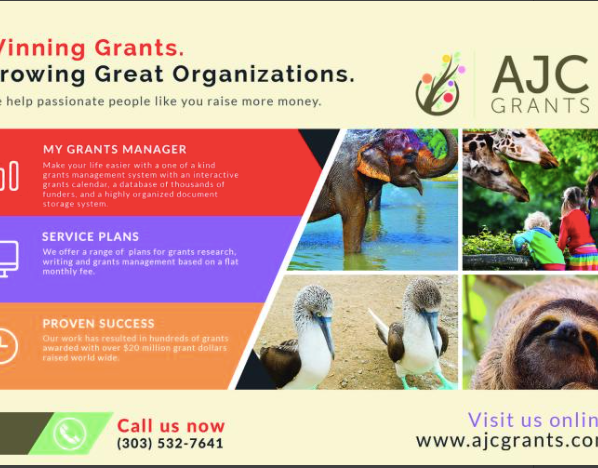Six Mistakes Even Experienced Fundraisers Make and How to Avoid Them
1) Make Sure You Are Asking for the Right Amount
2) Do the Math, Keep Track of Your Success Rate
3) Learn the Rules, Then Break Them
4) Cultivate Good Relationships and Update Donors, Even When You Aren’t Asking for Money
5) Participate in a Grants Review Committee and Learn How Proposals Are Scored First Hand
6) If You Get Declined, Find Out Why
A closer look at motivating donors
1) Make Sure You Are Asking for the Right Amount – When submitting a grant proposal, it is essential to find out what the grant making organization’s average gift size is, so that you can be sure your request is on target. You can learn this by looking at their 990’s, which are public documents available through places like your local library and county public records office, or online through the Foundation Center database or Guidestar directory. Many foundations and corporate charitable giving arms list the names and award amounts of their grantees on their website, but if you want to dig a little deeper into a particular foundation’s giving history, The Foundation Center directory will allow you to pull up the average, largest and smallest gift a foundation has made over the last few years. You may be eligible for a larger grant amount than you think and many organizations err on the side of asking for too little. Do not get caught in the cycle of asking for $10,000 every year just because you always have. You may discover that another organization with a similar mission and operating budget has been receiving larger grants each year and you have not because you didn’t ask for it.
2) Do the Math, Keep Track of Your Success Rate – If you want to increase your grant dollars, it is very important to know what the overall success rate of your organization is. To do this, you must calculate how many proposals you submitted over the course of one year, the total dollar amount of all requests submitted, and the number and total dollar amount of grants awarded that year. If you received 30% of the total amount requested, and you need to raise $100,000 in grant funding this year, you will need to plan to make $300,000 in grants over the next 12 months. Then you will find that doing step 1, making sure that you are asking for the right amount will help you to plan the total number of proposals and dollar amounts per request to submit to meet your fund raising goal. This is assuming that you are asking for funding from places that you already know are a good match, are interested in your mission and have either funded you or other nonprofits like yours in the past.
3) Learn the Rules, Then Break Them – You can compare the next point to writing. In order to become a good writer, you first have to learn good grammar and punctuation rules, but once you understand the basics, you can intentionally break the rules to establish your own style. I have seen this rule-breaking trend often over the past few years, as the economy has hit nonprofits particularly hard. I have seen organizations that were facing a deficit budget or were at risk of closing their doors make a special appeal to foundations for the funding they needed to carry through. We have to remember that these grant-making organizations are not banks, but are made up of real people who care about your mission, probably for some very personal reasons. If you need emergency funding or have a time sensitive project, go to your grantors outside of their grants cycle, explain your situation and ask for permission to submit a special request. This tactic is not likely to work with government agencies or strict corporate giving arms, but may be probable with family foundations where you have built good personal relationships with people that care about your work.
4) Cultivate Good Relationships and Stay in Touch with Grantors, Even When You Aren’t Asking for Money – Make a habit of sending a monthly update to your donors so that they stay current on what is happening with your organization. There are several things you can do to keep the communication open, such as sending newspaper clippings, sending out photos of special events, and if your major donors are accessible, set a date to have lunch once a quarter. It is very important to make sure they know when you reach certain milestones and when you are truly struggling. Find out why they are personally interested in your work. You may not always want to grow or operate in exactly the way your donors want you to, but keeping communications open and giving them plenty of opportunities to stay involved and feel good about supporting you will help strengthen your partnerships and make it a lot easier to go to them for increased funding when you need it.
5) Participate in a Grants Review Committee and Learn How Proposals Are Scored First Hand – Many places like the United Way, government agencies and local community foundations use volunteer review committees to score proposals and make decisions on how to distribute the funds available to various organizations. A great way to learn about the scoring and distribution process is to volunteer to serve on one of these committees. Some committees divide the proposals into sections, score each part individually, and then fund the ones with the highest overall score. Participating in one of these review committees is a great way to see how the process works firsthand. By doing so, you are being a good citizen and getting involved in important decisions for your community. It is best to avoid any conflict of interest, so if for example you are involved in an arts organization, chose to serve on a committee around education. The process is the same and it will help you to understand how people outside of your world view your work.
6) If You Get Declined, Find Out Why – You may have to ask more than once to get a real answer, but if your proposal is declined, do not accept the standard response form that says thank you for submitting your request but unfortunately we have limited funding at this time. Make sure that you have a real conversation with the foundation’s program officer about why you were turned down, and if there was a review committee, ask to see how the proposal was scored. Read the reviewer’s comments and share that information with your colleagues. It is impossible to improve your overall success rate if you do not have a real understanding of why the proposal was declined. Sometimes, the answer truly is that there was not enough funding and the donor is supporting organizations they have a long history with. If you can commit yourself to engaging someone in a real conversation after each decline, you will take great strides to improve your process and your success rate.
Seven Ways to Maximize Your Conference Outcomes
Planning ahead, dividing the workload and sharing knowledge gained from attending a conference can maximize your results.
Over the last few years, I have attended some excellent conferences on fundraising and nonprofit development: Grantmakers Without Borders, Civicus World Assembly, Association of Fundraising Professionals, Women’s Funding Network and the Colorado Nonprofit Association, to name a few. I always come away feeling inspired but a little overwhelmed by the whirlwind of information and contacts I have collected. Sometimes I attend conferences to gain new skills and specific information to share with clients, and other times I attend to connect with my colleagues and meet new people. The benefits come from the real-time interactions, spontaneous meetings with people I may have only communicated with online, and the ability to share ideas immediately through various networks. For some of us, this amazing inflow of information compacted into a few days can be hard to process; fortunately, there are some creative ways to help us manage what we learn.
Seven Tips
Below are seven strategies that conference attendees can use to effectively compile new information and maximize motivation:
1. Plan ahead and learn about the experts you’ll have the chance to hear from.
2. Don’t set limits on what you can do. You attend conferences to gain exposure to new concepts and new ways of doing things, so choose sessions that will introduce you to new ideas rather than those where you might feel the most comfortable.
3. Write a daily summary of what you learn.
4. Share all your thoughts and experiences with your colleagues. Pass ideas on to staff and board members and do not worry about how rough they seem. The content and conversations around them can inspire change.
5. If you’re attending the event with a team, “divide and conquer” the conference with colleagues for the most benefit to your organization.
6. Talk to people at the sessions you attend to create a network of new colleagues, and make notes on the back of the cards you collect right away.
7. Change something. Attending a conference will affect change because it gets you out of the office and away from the regular routine. While most think our work environments are dynamic and rapidly changing places, people fall into ruts. Use what you learn to change up your routine.
After the conference: The most important point to remember is if you don’t ask yourself what you’ve learned and organize your new ideas right away, your ability to inspire and influence your team will be lost. Instead, take a moment to ask yourself the questions below at the end of each day and draft your follow-up plan. Going to conferences shows your passion and interest in the field. Let people know you went. You will be surprised at how many people are interested and want to know more. Finally, information management is personal, and there is plenty of room for creativity. Just commit to doing something that channels your inspiration into action.
Questions to ask yourself:
1) What was the most important and useful thing you learned today?
2) What old routine did you think of today that you want to get out of? If you can implement one positive change as a result of what you learned in a conference, you’ve succeeded in helping your organization prosper.
3) Whom did you meet today that you would like to follow up with and potentially collaborate with in the future?
4) What’s your plan to communicate what you learned today with your team, constituents or board members?










